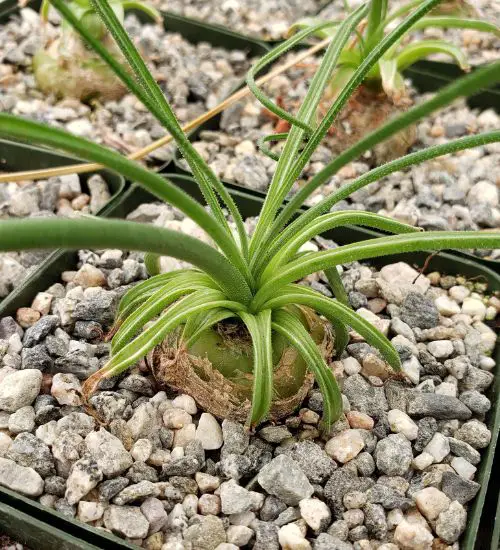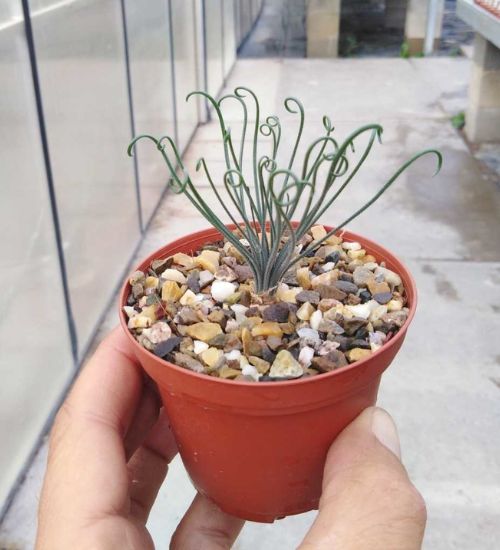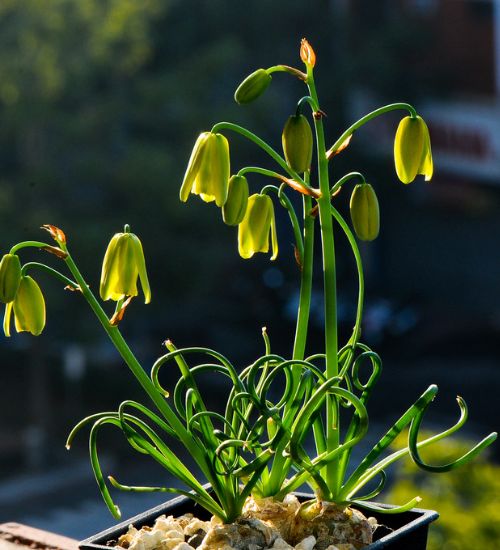Sun: full sun to partial shade
Water: Typical water needs for a succulent
Temperature: Zone 9b from 25° F to 30° F (-3.9° C to -1.1° C) to Zone 11b from 45° F to 50° F (7.2° C to 10° C)
Winter Survival: Not cold hardy
Propagation: seeds, division
Flower: in the Winter.
Flower Type: Yellow
Toxic: no information
Dormant: summer
Space Requirement: Indoors & Outdoors
Common Problems: No major pests, Plants may rot if overwatered
Where to buy Albuca Namaquensis?
Basc Care for Albuca Namaquensis
Watering
Can you water your succulent more than what its need? The answer is yes and no. In extreme conditions, you can water your plants more often when you notice the soil is completely dry.
One simple tip for you is that you can use some online apps to check the soil status before you go water your succulents. I would recommend the ThePlantsCheck app, it has some nice features there.
Fertilizing
Only feed this succulent during its active growing seasons which means no information. Use the right fertilizer applied in the right amounts. Applying half-strength balanced fertilizer every month or so is recommended for optimal results.
Do not fertilize during summer as the plant is dormant.
Sun & Location Requirements for "Spiral Grass"
Albuca Namaquensis needs full sun to partial shade in order to thrive. While this variety needs plenty of bright light, it is important not to place it in direct sunlight for extended periods of time as this can cause damage or scorching to the leaves and stems. A shadier spot with indirect light could be just what "Spiral Grass" needs.
As per this succulent profile, it is only able to stay healthy when the environment temperature is above the range of zone 9b from 25° F to 30° F (-3.9° C to -1.1° C).
In order to protect Albuca Namaquensis from freezing temperatures, it is important to provide adequate insulation and drainage. A layer of mulch or gravel will help protect the roots by keeping them warm during cold weather. In addition, protection from wind and sun exposure can help reduce the chances of frost damage.
Any succulents in the group will need a medium space to grow. You can place your pot at your table or window. Since this plant needs more space than mini succulents, you should consider do not plant them together with other succulents/plants.
Albuca Namaquensis also benefits from some indirect light throughout the day as well, so make sure you give it enough space to soak up light without becoming too exposed to heat.
Propagation
Propagating Albuca Namaquensis from seeds is a great way to produce new plants without relying on cuttings or divisions. It's important to look for healthy, dark and plump seeds that are slightly sticky when touched. The soil should be pre-mixed with well-draining potting mix, before evenly sowing the seeds and pressing them into the surface. To ensure successful germination, gentle misting of the soil should be done and placed in indirect light.
Toxicity

Pests and Diseases
Albuca Namaquensis is not affected too much by common pests and diseases like most of the other succulents.


